
Clay is a type of fine-grained natural soil material containing clay minerals. Clays develop plasticity when wet, due to a molecular film of water surrounding the clay particles, but become hard, brittle and non–plastic upon drying or firing. Most pure clay minerals are white or light-coloured, but natural clays show a variety of colours from impurities, such as a reddish or brownish colour from small amounts of iron oxide.

Ebonite is a brand name for a material generically known as hard rubber, and is obtained by vulcanizing natural rubber for prolonged periods. Ebonite may contain from 25% to 80% sulfur and linseed oil. Its name comes from its intended use as an artificial substitute for ebony wood. The material has also been called vulcanite, although that name formally refers to the mineral vulcanite.

Bronze is the most popular metal for cast metal sculptures; a cast bronze sculpture is often called simply a "bronze". It can be used for statues, singly or in groups, reliefs, and small statuettes and figurines, as well as bronze elements to be fitted to other objects such as furniture. It is often gilded to give gilt-bronze or ormolu.

Plasticine is a putty-like modelling material made from calcium salts, petroleum jelly and aliphatic acids.
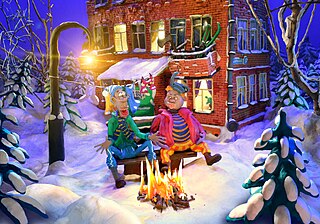
Clay animation or claymation, sometimes plasticine animation, is one of many forms of stop-motion animation. Each animated piece, either character or background, is "deformable"—made of a malleable substance, usually plasticine clay.
This page describe terms and jargon related to sculpture and sculpting.
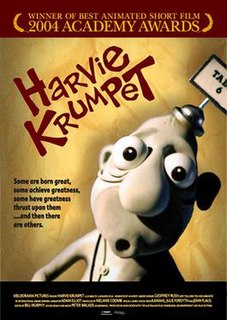
Harvie Krumpet is a 2003 Australian clay animation comedy-drama short film written, directed and animated by Adam Elliot, and narrated by Geoffrey Rush. It tells the life story of Harvie Krumpet, a Polish-Australian man whose life is plagued by bad luck but who nevertheless remains optimistic.

Automotive design is the process of developing the appearance, and to some extent the ergonomics, of motor vehicles, including automobiles, motorcycles, trucks, buses, coaches, and vans.
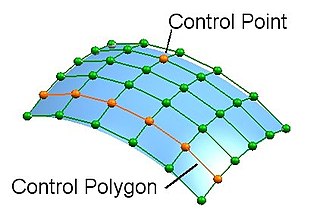
In automotive design, a class A surface is any of a set of freeform surfaces of high efficiency and quality. Although, strictly, it is nothing more than saying the surfaces have curvature and tangency alignment – to ideal aesthetical reflection quality, many people interpret class A surfaces to have G2 curvature continuity to one another.

Modelling clay is any of a group of malleable substances used in building and sculpting. The material compositions and production processes vary considerably.

Lifecasting is the process of creating a three-dimensional copy of a living human body, through the use of molding and casting techniques. In rare cases lifecasting is also practiced on living animals. The most common lifecasts are of torsoes, pregnant bellies, hands, faces, and genitalia and it is possible for an experienced lifecasting practitioner to copy any part of the body. Lifecasting is usually limited to a section of the body at a time, but full-body lifecasts are achievable too. Compared with other three-dimensional representations of humans, the standout feature of lifecasts is their high level of realism and detail. Lifecasts can replicate details as small as fingerprints and pores.

Investment casting is an industrial process based on lost-wax casting, one of the oldest known metal-forming techniques. The term "lost-wax casting" can also refer to modern investment casting processes.
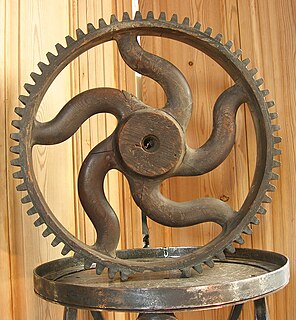
In casting, a pattern is a replica of the object to be cast, used to prepare the cavity into which molten material will be poured during the casting process.
Motorcycle design can be described as activities that define the appearance, function and engineering of motorcycles.

Rapid prototyping is a group of techniques used to quickly fabricate a scale model of a physical part or assembly using three-dimensional computer aided design (CAD) data. Construction of the part or assembly is usually done using 3D printing or "additive layer manufacturing" technology.

Clay modeling for automobile prototypes was first introduced in the 1930s by automobile designer Harley Earl, head of the General Motors styling studio.
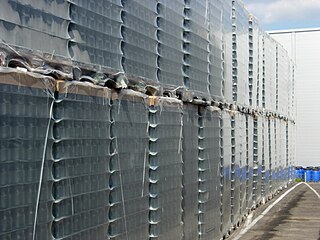
Glass production involves two main methods – the float glass process that produces sheet glass, and glassblowing that produces bottles and other containers. It has been done in a variety of ways during the history of glass.
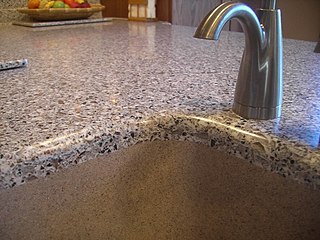
Solid surface is a man-made material usually composed of a combination of alumina trihydrate (ATH), acrylic, epoxy or polyester resins and pigments. It is most frequently used for seamless countertop installations.

Casting is a manufacturing process in which a liquid material is usually poured into a mold, which contains a hollow cavity of the desired shape, and then allowed to solidify. The solidified part is also known as a casting, which is ejected or broken out of the mold to complete the process. Casting materials are usually metals or various time setting materials that cure after mixing two or more components together; examples are epoxy, concrete, plaster and clay. Casting is most often used for making complex shapes that would be otherwise difficult or uneconomical to make by other methods. Heavy equipment like machine tool beds, ships' propellers, etc. can be cast easily in the required size, rather than fabricating by joining several small pieces.

In 3D computer graphics, 3D modeling is the process of developing a mathematical coordinate-based representation of any surface of an object in three dimensions via specialized software.



















